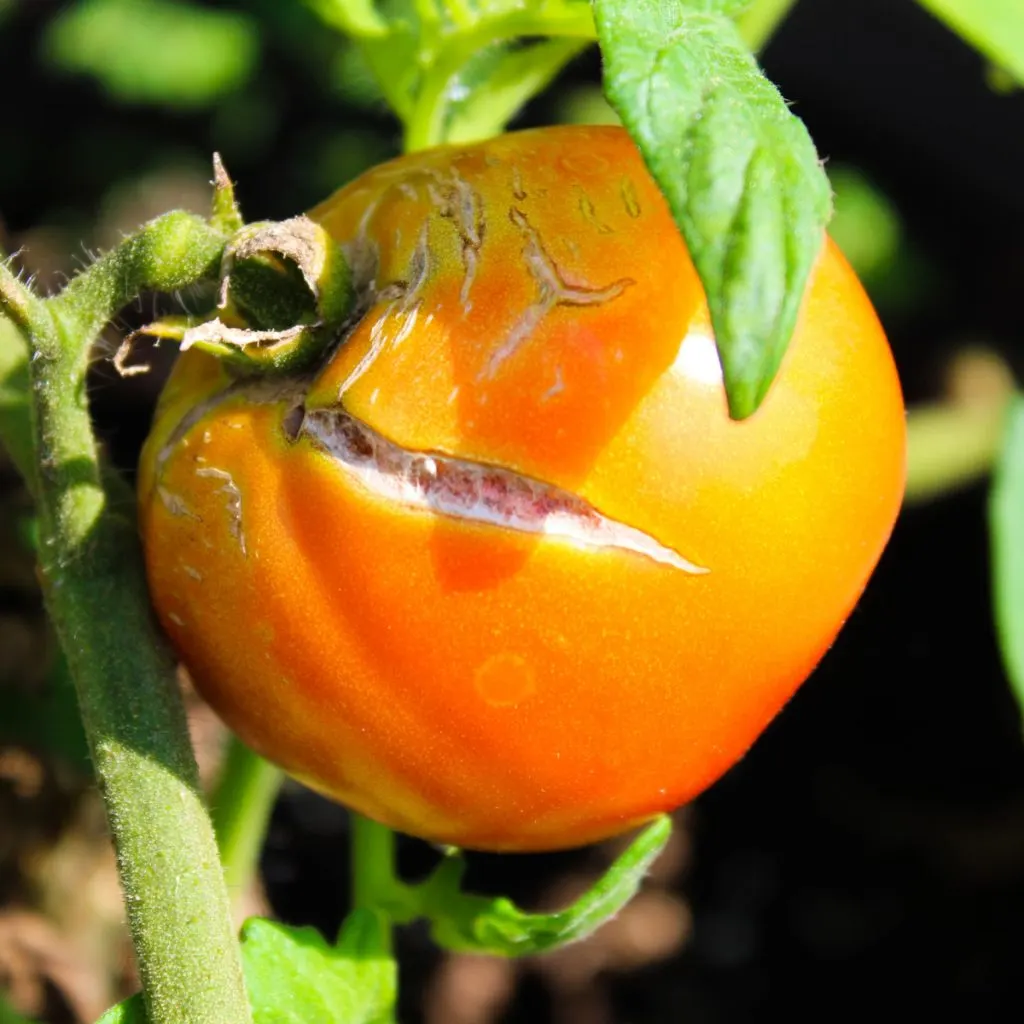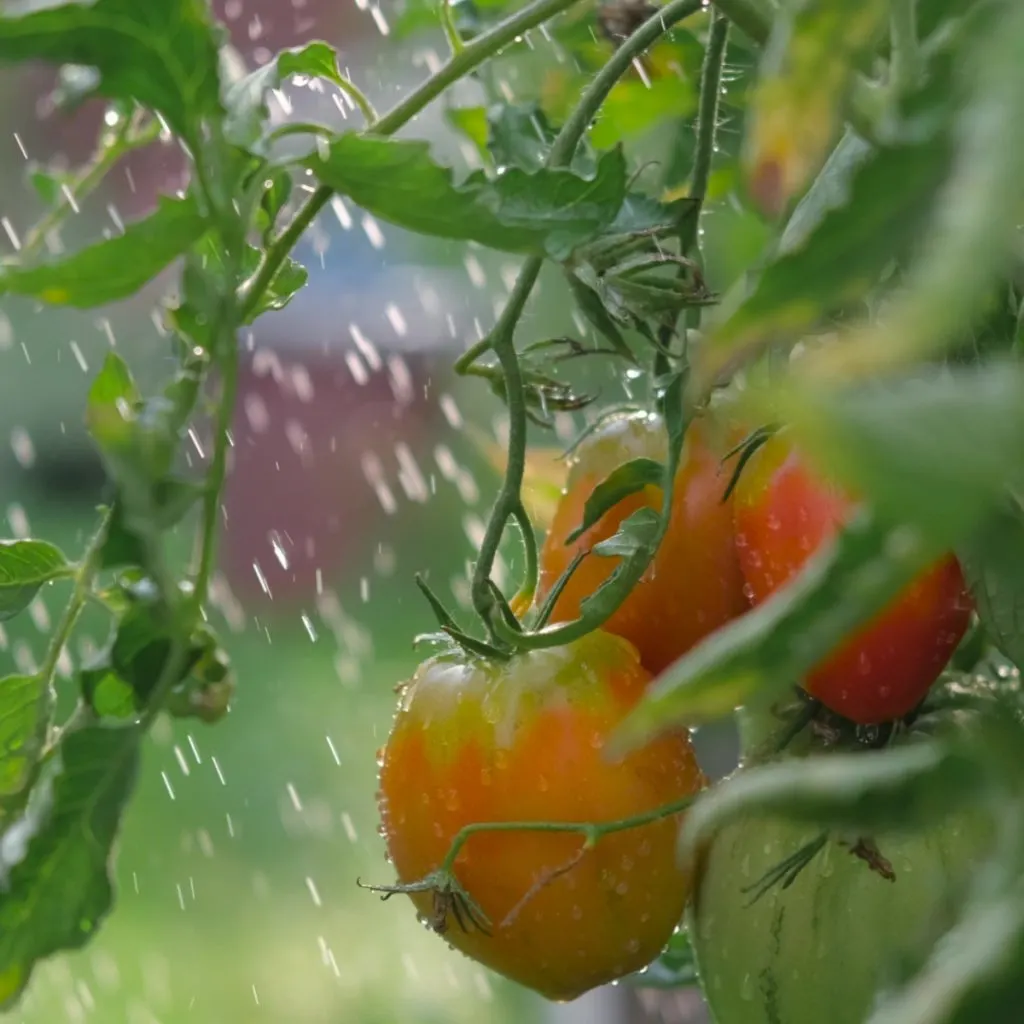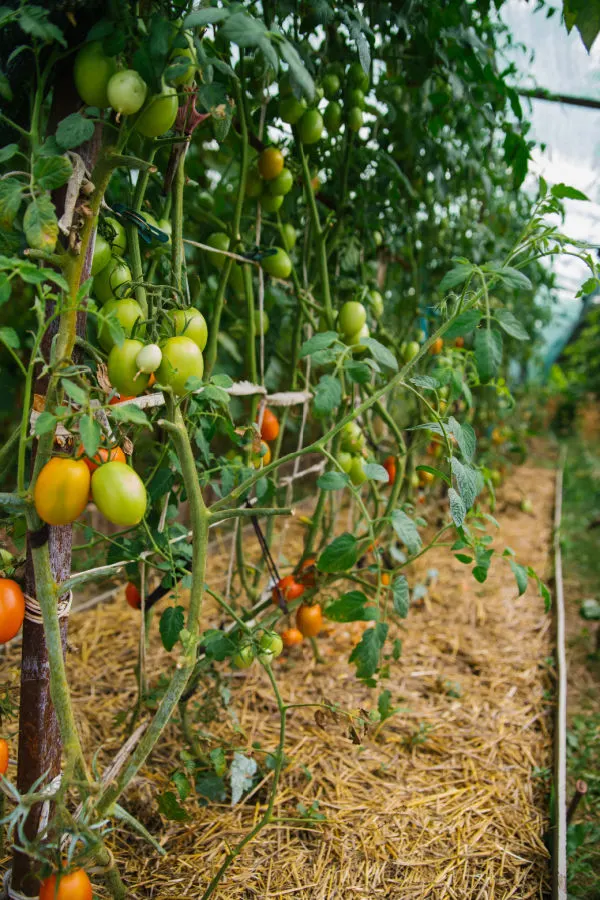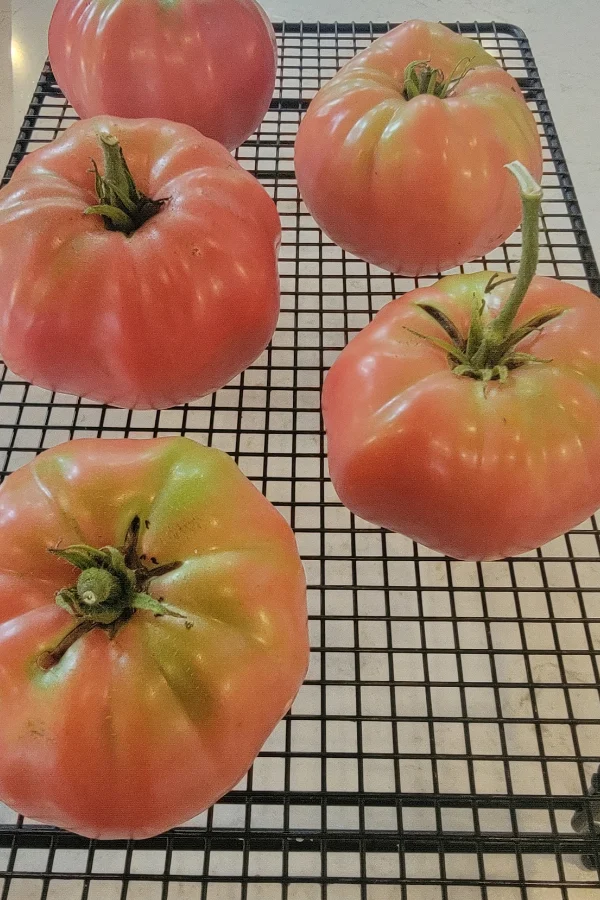Wondering how to stop your tomatoes from splitting and cracking as they ripen on your plants this summer?
For a gardener, it can be all but defeating to see a beautiful crop of developing tomatoes suddenly begin to blister, crack and split. Not only does it make for an unsightly tomato, it also damages the fruit in the process. In fact, quite often, it can ruin a tomato entirely!
When a tomato splits open on the vine, the tender flesh begins to ooze out moisture. Unfortunately, when that happens, a portion of the flavor exits as well. But even worse, all of that moisture can also attract a whole host of pests who enjoy feeding on the juice.

Why Tomatoes Blister, Crack & Split
So what causes tomatoes to crack and split? Contrary to popular belief, it has nothing to do with a lack of nutrients in the soil. In fact, applying more fertilizer and nutrients will not help them stop cracking in the least. Cracking and splitting is also not the result of a pest or disease issue.
Instead, the issue is a direct result of large swings or fluctuations in the moisture a tomato plant receives. As in plants getting too much water all at once – or far too little over an extended period of time.
Although you certainly can’t control what nature brings to your tomato crop in the form of rain or drought, there are a few simple tips that can go a long way in helping to prevent moisture issues from blistering and ruining your tomato crop. And as you will see below, the real key to success is to jump into action as soon as you see the first signs of your tomatoes starting to blister!
How To Stop Tomatoes From Splitting & Cracking
Watering Tomato Plants
Without a doubt, how and when you water your plants is one of the biggest factors in keeping them safe from blistering.

When it comes to proper moisture for tomato plants, on average, a plant should receive between 1 to 1.25 inches of rain per week. That is enough water to keep the roots of your plants moist, allowing them to easily absorb the moisture and nutrients they need.
So how do you know if your plants need water? The best way is to check the soil down about three to four inches in depth. To do this, you can use a wooden skewer or an inexpensive soil moisture meter.
If the skewer comes up with a bit of soil sticking to it, it is a good indication that there is still moisture around the roots. The moisture meter, of course, is far more accurate. It can give you an instant reading of exactly how much moisture is right at the root level. Affiliate Product Link: Soil Moisture Meter Probe
The moisture level around the roots of tomato plants should be somewhere between 40% and 70%. Any more or less for an extended time can lead to tomatoes starting to crack and blister. So what is the best way to water your plants to make sure you give them exactly what they need? It all starts by watering less often – but deeper into the soil!

Watering Tomato Plants Correctly – How To Stop Tomatoes From Splitting & Cracking
One of the biggest mistakes gardeners often make it to water their plants too often and too shallow. Watering just a little every day may keep the plants supplied with water, but it causes long term issues for the plant.
Shallow watering keeps the roots of tomato plants near the surface. When that happens, it leaves them more vulnerable to drying out too quick, or becoming overly soggy when too much rain occurs.
When watering, water deep. Allow enough water to get down farther into the soil to develop strong, deep roots. This is also one more reason to plant your tomatoes deep in the soil. The deeper you plant, the more roots develop down in the soil where they are less vulnerable to watering issues.
The Power Of Mulch – How To Stop Tomatoes From Splitting & Cracking
One of the best ways to help your watering efforts is by always mulching your tomato plants. A thick layer of organic mulch (straw, grass clippings, etc.) will do wonders for your tomato plants. Especially when it comes to preventing them from splitting.

Mulch helps to regulate the soil temperature and moisture levels. It keeps the soil from drying out too fast, which is excellent during drought-like conditions. But it also helps shed away excess water during hard storms or heavy rains.
With a more balanced soil temperature and moisture level, the plants do not suffer the stress that can lead to the fruit blistering.
So how much mulch is enough? It’s best to apply at least 4 inches around the plant, making sure to mulch wide enough enough to cover the root zone. Not only will it help to keep them from splitting, it will also keep away competing weeds too!
Pick Early – How To Stop Tomatoes From Cracking or Splitting
Last but not least, always, always, always pick your tomatoes early off of your plants! Picking tomatoes when they first start to turn and letting them ripen off the vine is a great way to prevent cracking. And no – it will not affect the flavor or taste. In fact, it can often improve it! See: How To Get Your Tomatoes To Ripen Faster – 4 Simple Secrets To Speed Up Ripening!

Once tomatoes slightly start to turn from the unripe, solid green stage, the ripening process has begun. And once this happens, they do not need to stay on the plant to complete the ripening process.
The good news is that once you take them off the plant – the stress of moisture or heat is gone. And as long as you ripen them in a cooler place out of the sun, there is no worry of splitting or cracking!
This Is My Garden
Follow Our Facebook Page For Great Gardening Tips And Advice! This Is My Garden Facebook Page
This Is My Garden is a garden website created by gardeners, for gardeners. Jim and Mary Competti have been writing gardening, DIY and recipe articles and books and speaking for over 15 years from their 46 acre Ohio farm. They publish three articles every week, 52 weeks a year. Sign up today to follow via email, or follow along!
